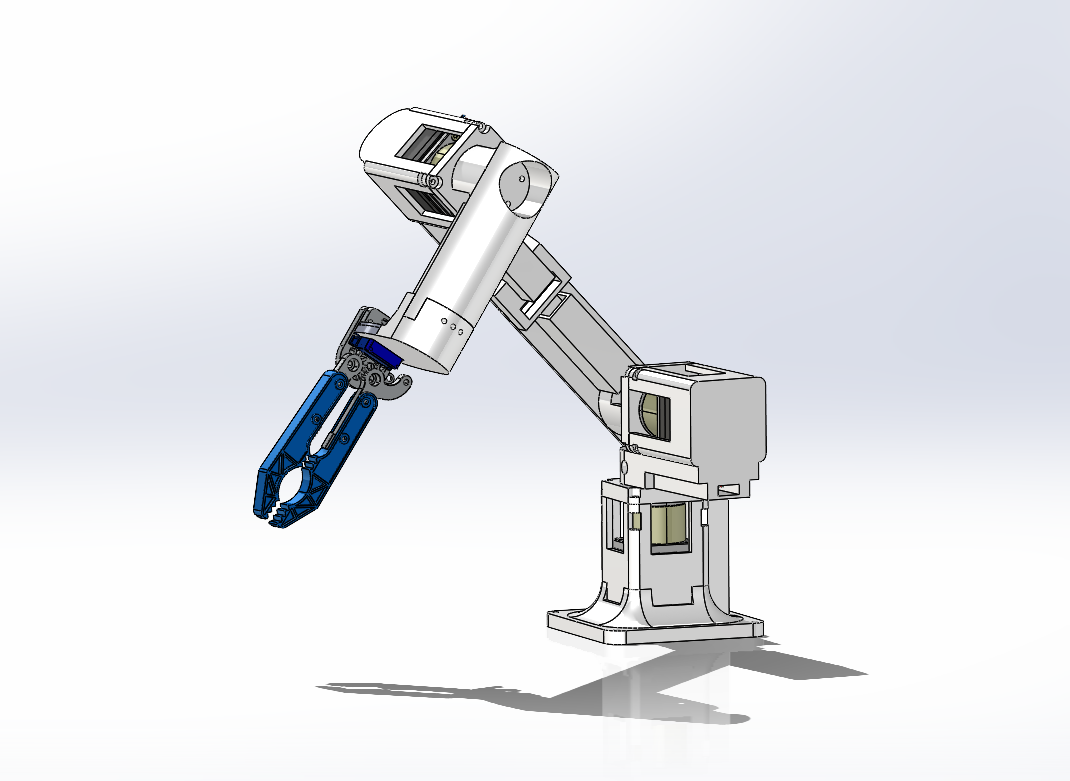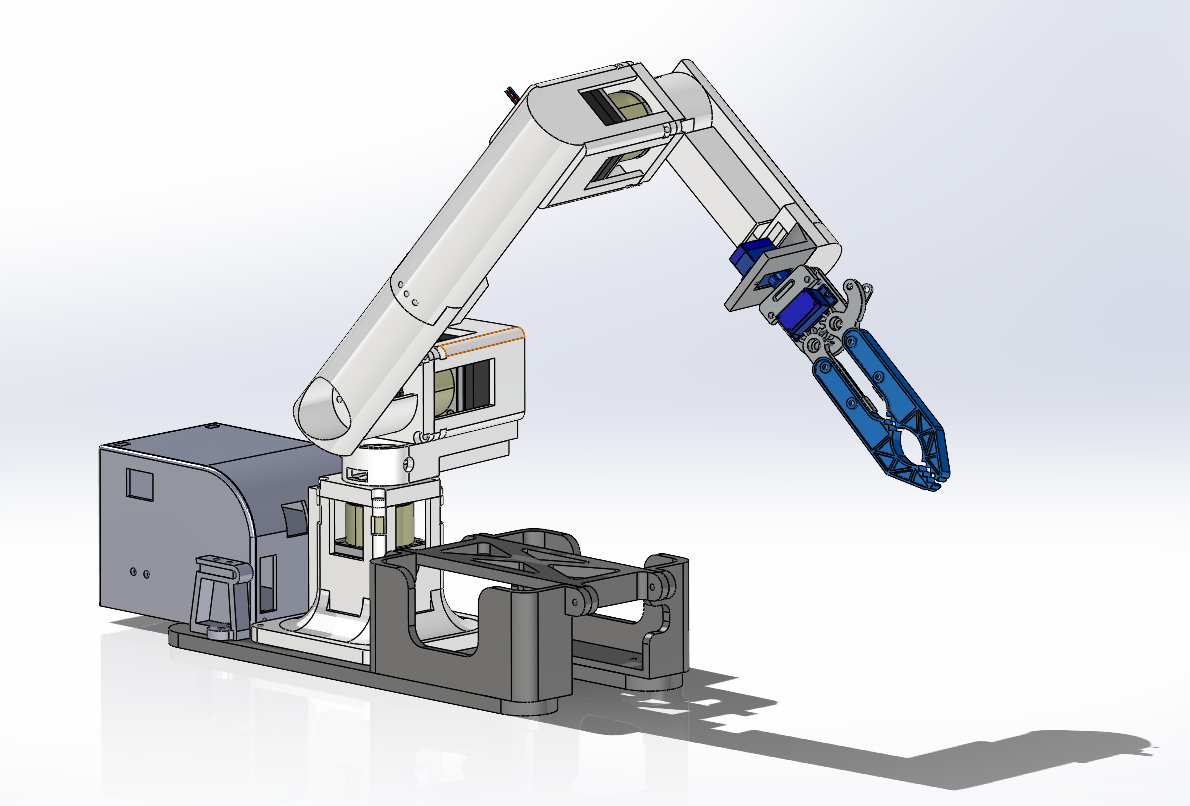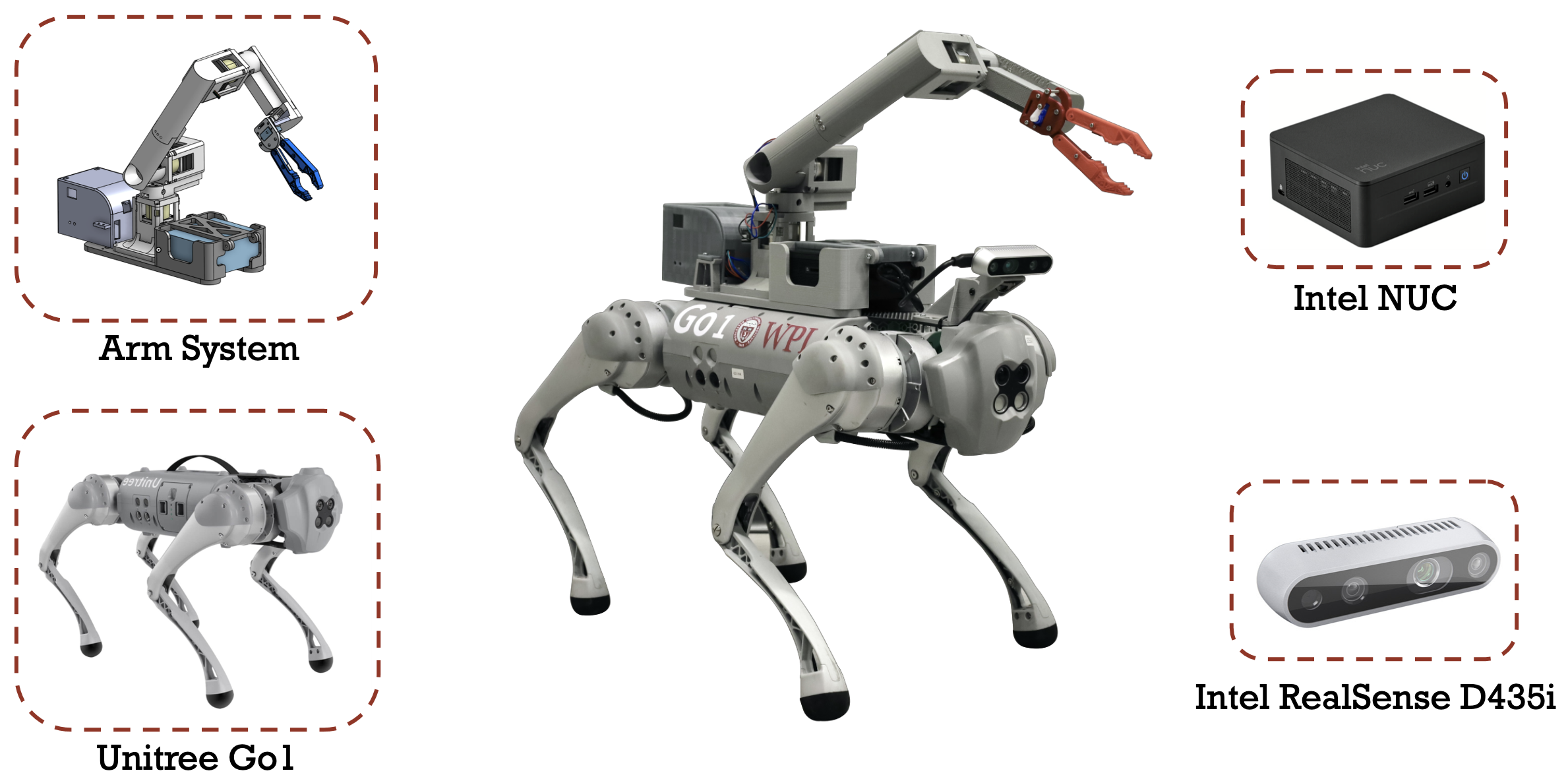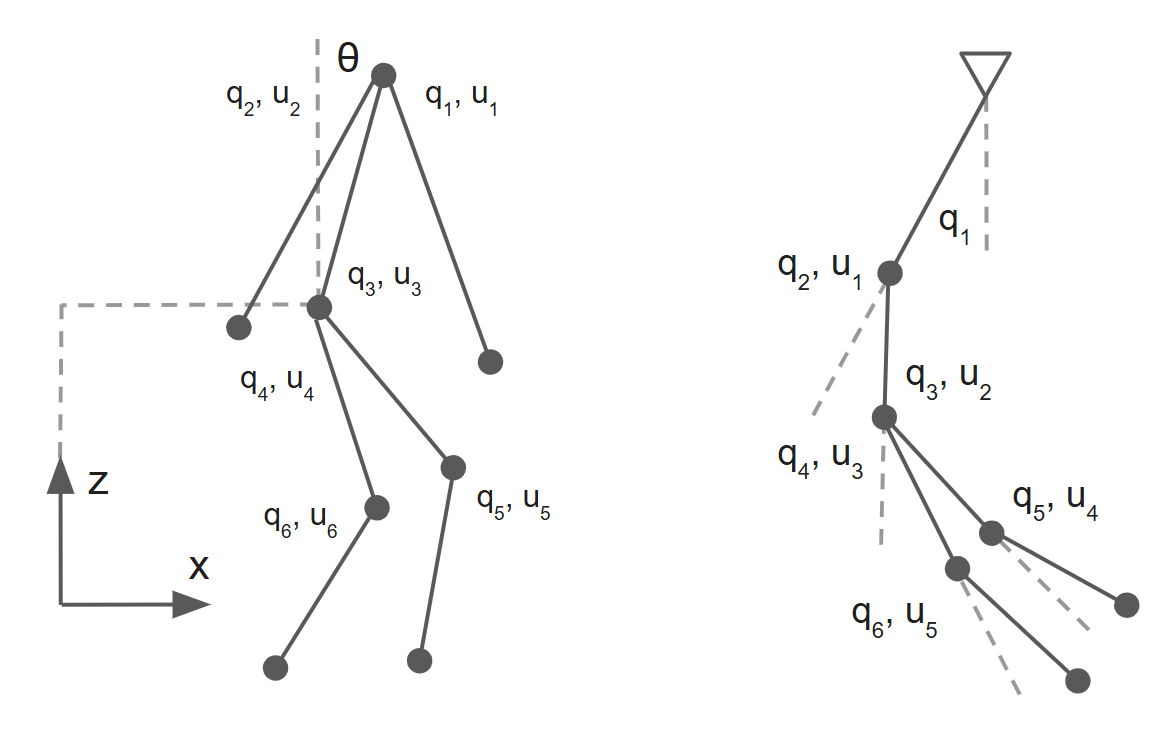A list of projects.
![]()
Resilient Multi-Robot Exploration
Master's Thesis, Penn
Coming soon.

Bimodal Quadruped Robot
Senior Capstone, WPI
Designed and built a 3-DOF robotic arm with a 2-DOF gripper for the Unitree Go1, integrating custom PID motor control and ROS for agile loco-manipulation.
×
BiQu: Bimodal Quadruped Robot

Senior Capstone, WPI
Advisor: Dr. Mahdi Agheli
Time: Aug 2023 - May 2024
Role: Mechanical Lead (Team of 6)
Skills: CAD, Arduino, ROS, PCB Design
Publication:
BiQu: Bimodal Quadruped Robot, Digital WPI, 2024
Award: MQP Award Honorable Mention
Overview
This work presents an open-source framework that facilitates planning through contact, enhancing robots’ capabilities in logistics, construction, and even planetary exploration. Our approach leverages a versatile trajectory optimization method and real-time perception to generate dynamic motions, coordinated through whole-body control. We validate our framework’s effectiveness on the Unitree Go1 equipped with a custom arm, demonstrating its application across various gaits and jumping maneuvers, as well as in simulated environments on humanoid robots like HURON and Atlas. The results showcase the framework’s potential to enable complex athletic tasks and manipulation while navigating diverse terrains.
Contributions
- Designed and fabricated a 3-DOF robotic arm with a 2-DOF gripper using SolidWorks and 3D printing, performing torque and structural analysis to select motors and gearboxes for required payload handling.
- Developed and wired custom motor drives and PCB using EasyEDA, integrating power distribution, motor control, and battery housing into a compact, modular electronics enclosure.
- Integrated the arm with ROS and the Jetson Nano on the Unitree Go1, enabling real-time motion control and communication with the quadruped’s onboard systems for precise loco-manipulation.
CAD Design


Hardware

Software

![]()
Safe Game-Theoretic Multi-Robot Task Allocation
CIS 6200, Penn
Coming soon.

Flocking Control for Dynamic Object Tracking
MEAM 6240, Penn
Developed a flocking-based robot system that tracks a moving target, maintains formation, and avoids obstacles collaboratively.

Quadrotor Planning and Control
MEAM 6200, Penn
Tested and validated control and navigation algorithms on the Crazyflie 2.0, enabling precise, agile flight through maps and mazes using A*, trajectory optimization, and state estimation.

Humanoid Gymnastics
MEAM 5170, Penn
Designed and implemented an operational space controller in simulation for a planar humanoid robot to achieve stable walking and jumping.

Robotic Bird Deterrent
Independent Study, WPI
Designed and built a small proof-of-concept robot to patrol a power transmission line and discourage birds from congregating on the wire.

Unknown Maze SLAM and Navigation
RBE 3002, WPI
Programmed a Turtlebot 3 robot to navigate through an unknown maze using A* frontier exploration and generate a map for the maze using laser-based SLAM.

Vision-Based Robotic Pick and Place
RBE 3001, WPI
Developed an autonomous vision-based robotic pick and place system to sort balls of different colors using a 3 DoF spherical robot manipular.

Robot Escape Room
RBE 2002, WPI
Customized and programmed a set of robots to communicate with each other to escape from a maze that uses a variety of beacons and tags to lead the robot to find the escape door.

Robotic Replacement of Solar Collector Panels
RBE 2001, WPI
Built and programmed a set of mobile robots to work together to pick up solar panels and place them onto roofs of different angles on a competition field.








